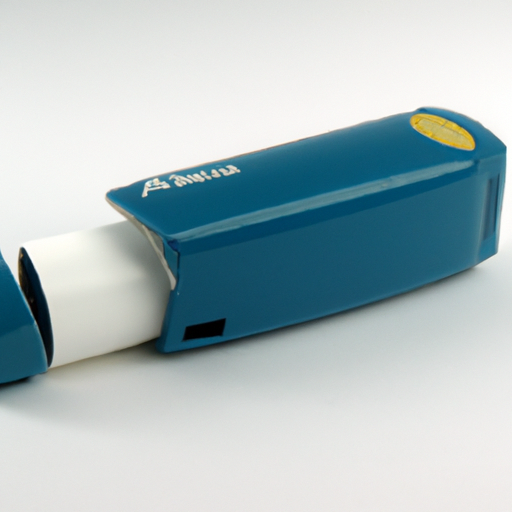Have you ever wondered about the different types of inhalers available for managing asthma? Whether you have been using inhalers for a while or are just starting to explore your options, understanding the varieties can greatly enhance your asthma management. From the commonly used metered-dose inhalers (MDIs) to dry powder inhalers (DPIs) and nebulizers, each type offers unique benefits and considerations. In this article, we will delve into the various types of inhalers for asthma, shedding light on their mechanisms of action and how they can effectively provide relief. So, let’s dive in and discover the diverse world of inhalers!
Bronchodilators
Bronchodilators are a key component in the treatment of asthma. They work by relaxing the muscles around the airways, making it easier to breathe. There are several types of bronchodilators available, with short-acting beta agonists (SABAs) and long-acting beta agonists (LABAs) being the most common.
Short-acting beta agonists (SABAs)
SABAs are often used as quick-relief inhalers for asthma symptoms. They work by rapidly opening up the airways, providing immediate relief from wheezing, coughing, and shortness of breath. Commonly prescribed SABAs include albuterol and levalbuterol. These inhalers are typically used on an as-needed basis when you are experiencing symptoms.
Long-acting beta agonists (LABAs)
LABAs provide long-lasting relief by keeping the airways open for an extended period. They are typically used in conjunction with inhaled corticosteroids to manage persistent asthma symptoms. LABAs, such as salmeterol and formoterol, are taken regularly and should not be used as rescue inhalers during an asthma attack.
Anticholinergics
Anticholinergics are another type of bronchodilator that work by blocking the action of a neurotransmitter called acetylcholine. This helps to relax the airway muscles and reduce constriction. Anticholinergics, like ipratropium bromide and tiotropium bromide, are commonly prescribed to manage chronic obstructive pulmonary disease (COPD) and severe asthma symptoms.
Corticosteroids
Corticosteroids are anti-inflammatory medications often prescribed to reduce airway inflammation and prevent asthma attacks. They come in two different forms: inhaled corticosteroids and systemic corticosteroids.
Inhaled corticosteroids
Inhaled corticosteroids are the most common type of asthma medication used for long-term control. They work by reducing swelling and mucus production in the airways, making it easier to breathe. Popular inhaled corticosteroids include fluticasone, budesonide, and beclomethasone. These medications are usually taken daily to prevent symptoms and improve overall asthma control.
Systemic corticosteroids
Systemic corticosteroids are typically prescribed for short-term use during severe asthma exacerbations or when inhaled corticosteroids alone are not effective enough. They work by reducing inflammation throughout the body, including the airways. Common systemic corticosteroids include prednisone and methylprednisolone. Due to the potential for side effects, systemic corticosteroids are usually used for the shortest duration possible.
Combination Inhalers
Combination inhalers are a convenient option for individuals who require both a bronchodilator and a corticosteroid medication. They simplify the treatment regimen by combining two different medications into a single inhaler.
Inhaled corticosteroids and long-acting beta agonists (ICS/LABAs)
These combination inhalers contain both an inhaled corticosteroid and a long-acting beta agonist. They are designed to provide both long-term control and immediate relief of symptoms. Commonly prescribed ICS/LABA combination inhalers include fluticasone/salmeterol and budesonide/formoterol.
Inhaled corticosteroids and anticholinergics (ICS/LAMAs)
ICS/LAMA combination inhalers combine an inhaled corticosteroid with an anticholinergic medication. They are primarily used for individuals with severe asthma or those who do not adequately respond to other treatment options. Examples of ICS/LAMA combination inhalers include fluticasone/umeclidinium/vilanterol and budesonide/glycopyrrolate/formoterol.
Inhaled corticosteroids, long-acting beta agonists, and anticholinergics (ICS/LABA/LAMAs)
These combination inhalers contain all three classes of medications: inhaled corticosteroids, long-acting beta agonists, and anticholinergics. They are reserved for individuals with severe asthma who require maximum therapy to achieve symptom control. An example of an ICS/LABA/LAMA combination inhaler is fluticasone/umeclidinium/vilanterol.
Biologics
Biologics are a newer class of medications used to treat severe asthma that does not respond well to other treatments. They target specific immune cells or proteins involved in the inflammatory process.
Monoclonal antibodies
Monoclonal antibodies are biologic medications that target specific immune cells or proteins in the body. They help reduce airway inflammation and prevent asthma attacks. Monoclonal antibodies like omalizumab and mepolizumab are typically prescribed for individuals with severe allergic asthma or eosinophilic asthma.
Interleukin inhibitors
Interleukin inhibitors are another type of biologic medication that target specific molecules involved in the inflammatory response. They are used in individuals with severe asthma who have high levels of specific interleukins in their airways. Interleukin inhibitors, such as dupilumab, are administered as injections and can help improve asthma control.
Other Inhaler Types
In addition to the aforementioned categories, there are other types of inhalers used to manage asthma symptoms.
Leukotriene modifiers
Leukotriene modifiers are oral medications that work by blocking the actions of leukotrienes, which are inflammatory molecules in the body. They can help decrease airway inflammation and reduce asthma symptoms. Popular leukotriene modifiers include montelukast, zafirlukast, and zileuton.
Methylxanthines
Methylxanthines, such as theophylline, are a type of oral medication that can also be used as a bronchodilator for asthma. They work by relaxing the muscles in the airways and reducing inflammation. Methylxanthines are typically reserved for individuals with severe asthma and are not as commonly prescribed as other types of inhalers.
In conclusion, there is a wide range of inhalers available for the management of asthma. From bronchodilators that help open up the airways to corticosteroids that reduce inflammation, and combination inhalers that provide both types of medications in one device, these options allow individuals to find the most suitable treatment for their specific needs. Biologics and other inhaler types serve as additional options for individuals with severe or difficult-to-treat asthma. It is important to work closely with your healthcare provider to determine the most appropriate inhaler for your asthma management plan.
